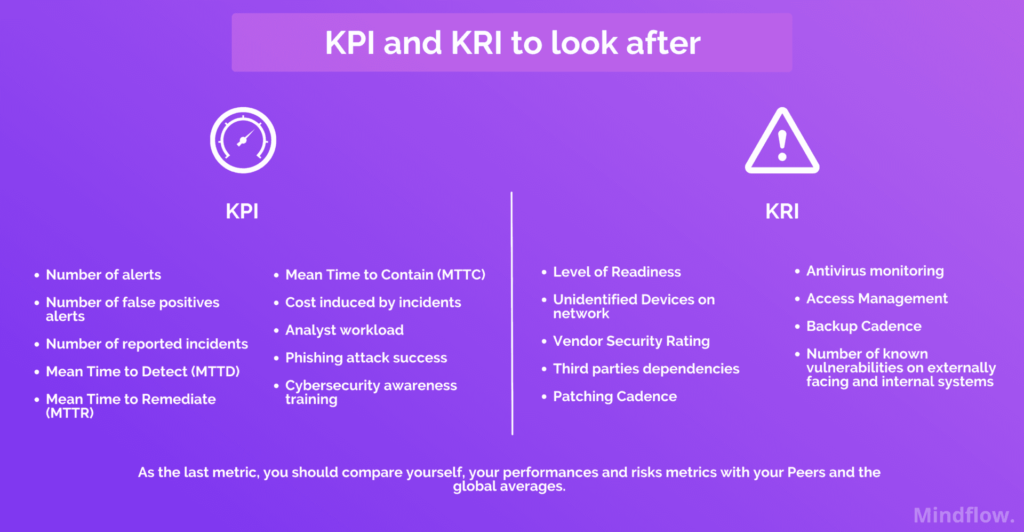Cybersecurity Metrics: Measuring the Effectiveness of Your Security Measures
In today’s increasingly digital landscape, where cyber threats are both pervasive and evolving, organizations must prioritize robust cybersecurity strategies. However, simply implementing security measures is not enough; businesses need to understand how effective those measures are. This is where cybersecurity metrics come into play. By establishing and monitoring relevant metrics, organizations can gain insights into their security posture, identify areas for improvement, and ensure a more proactive defense against cyber threats. This article explores the importance of cybersecurity metrics and outlines key metrics that organizations should consider.
The Importance of Cybersecurity Metrics
Cybersecurity metrics provide a quantitative basis for evaluating the effectiveness of security measures. They enable organizations to:
- Assess Risk Levels: By measuring various aspects of security, organizations can better understand their risk landscape and prioritize resources accordingly.
- Identify Weaknesses: Metrics can help pinpoint vulnerabilities within security systems, allowing organizations to address gaps before they are exploited by attackers.
- Inform Decision-Making: Data-driven insights facilitate informed decisions regarding security investments, helping organizations allocate budgets effectively.
- Demonstrate Compliance: Many industries require adherence to specific regulations and standards. Metrics can help organizations demonstrate compliance and meet reporting requirements.
- Enhance Incident Response: Tracking response times and the effectiveness of incident handling can improve overall incident management strategies.
Key Cybersecurity Metrics to Consider
1. Incident Detection Time
This metric measures the average time it takes to detect a security incident from the moment it occurs. A shorter detection time indicates a more effective security monitoring system. Organizations should strive to reduce this time, as faster detection can significantly mitigate the potential damage from an attack.
2. Mean Time to Respond (MTTR)
Mean Time to Respond measures the average time taken to respond to a security incident after it has been detected. A lower MTTR indicates that the organization can swiftly contain and remediate incidents, minimizing potential damage and downtime. Regularly reviewing and improving incident response protocols can help decrease MTTR.
3. Number of Detected Incidents
Tracking the total number of detected security incidents over a specific period provides insights into the organization’s threat landscape. This metric helps identify trends and patterns, allowing organizations to refine their security measures based on the types of threats they encounter.
4. Vulnerability Management Metrics
This category includes metrics such as the number of vulnerabilities identified, the average time taken to remediate them, and the percentage of vulnerabilities resolved within a specific timeframe. Effective vulnerability management is critical for reducing the attack surface, and these metrics can highlight the effectiveness of remediation efforts.
5. User Awareness Training Metrics
Employee training plays a vital role in cybersecurity. Metrics in this area could include the percentage of employees who have completed training, the results of phishing simulations, and the frequency of reported suspicious activities. High awareness levels correlate with lower incident rates, as informed employees are less likely to fall victim to social engineering attacks.
6. Security Posture Assessment
Conducting regular security posture assessments and tracking improvements over time can be invaluable. Metrics in this category may include the results of penetration tests, security audits, and compliance checks. This ongoing evaluation helps organizations measure the effectiveness of their security investments.
Conclusion
In an era where cyber threats are constantly evolving, organizations must go beyond merely implementing security measures; they need to measure their effectiveness rigorously. Cybersecurity metrics provide the necessary framework for assessing risk, identifying weaknesses, and improving incident response. By focusing on key metrics such as incident detection time, mean time to respond, and vulnerability management, organizations can gain actionable insights into their security posture.
Ultimately, adopting a metrics-driven approach to cybersecurity not only enhances resilience against cyber threats but also fosters a culture of continuous improvement, helping organizations stay one step ahead in the ever-changing digital landscape.

